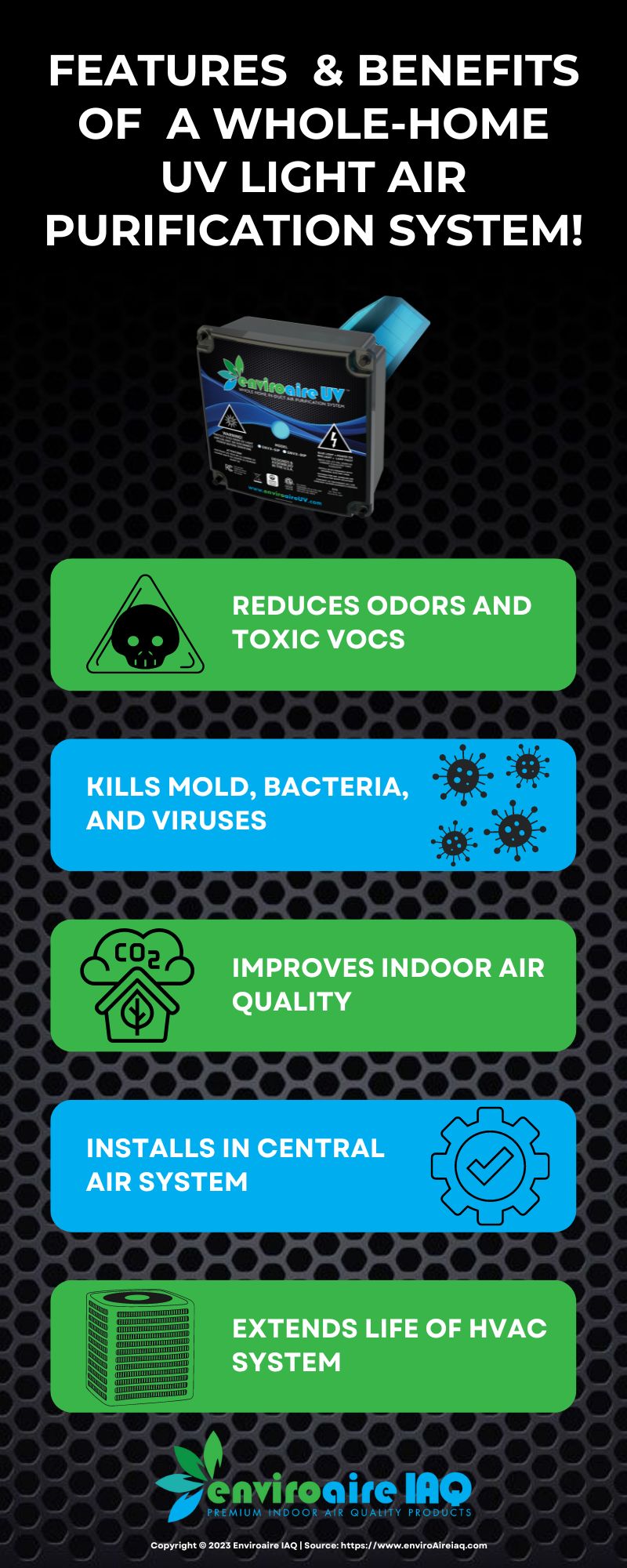Uvc Light Fundamentals Explained
Uvc Light Fundamentals Explained
Blog Article
5 Easy Facts About Uvc Light Explained
Table of ContentsEverything about Uvc LightLittle Known Questions About Uvc Light.All About Uvc LightThe Main Principles Of Uvc Light Unknown Facts About Uvc LightUnknown Facts About Uvc Light
A brand-new sort of ultraviolet light that might be secure for individuals took less than five minutes to minimize the degree of interior airborne microorganisms by more than 98%, a joint research study by researchers at Columbia University Vagelos College of Physicians and Surgeons and in the U.K. has actually discovered. Even as microorganisms remained to be splashed into the area, the level continued to be extremely low as long as the lights were on.Till currently these studies had actually only been carried out in little experimental chambers, not in full-sized rooms resembling real-world conditions. In the current research, researchers at the University of St. Andrews, College of Dundee, College of Leeds, and Columbia University examined the effectiveness of far-UVC light in a large room-sized chamber with the exact same ventilation price as a common office or home (concerning three air changes per hour).
The effectiveness of different techniques to minimizing indoor infection levels is typically determined in terms of equivalent air modifications per hour. In this study, far-UVC lamps created the matching of 184 comparable air exchanges per hour. This surpasses any other method to decontaminating busy interior areas, where five to 20 equivalent air changes per hour is the most effective that can be attained virtually.
Uvc Light Things To Know Before You Buy
.jpg)
The major specifications of UV-C disinfection are wavelength, dosage, family member humidity, and temperature level. There is no agreement regarding their ideal values, yet, generally, light at a high dosage and a range of wavelengths consisting of 260 nm is chosen in a setting at area temperature level with reduced family member humidity. This light can be produced by mercury-vapour, light-emitting diode (LED), pulsed-xenon, or excimer lamps.
Likewise, there are health and wellness risks associated with the UV-C technology when used in the distance of individuals. UV-C sanitation systems have encouraging attributes and the prospective to enhance in the future. Nevertheless, explanations surrounding the different parameters influencing the technologies' effectiveness in medical facility setting are required. Therefore UV-C disinfection must presently be taken into consideration for low-level rather than top-level disinfection.
Another application developed in 1910 when UV light was utilized to decontaminate water. Nowadays, UV light is utilized for water, air, food, surface, and clinical devices disinfection.
The smart Trick of Uvc Light That Nobody is Talking About
This results in the disturbance of DNA or RNA, leading to the inactivation of the micro-organism. UV-C-induced DNA interruption typically consists of the bonding of 2 neighbouring thymine (or cytosine) bases rather of the traditional connecting of a base with its complementary base on the other strand.

Dark repair, on the other hand, calls for numerous enzymes and nutrients for power [6] It is essential to recognize whether last inactivation results have thought about the event of reactivation given that it might result in 60% of the accomplished inactivation being turned around [7] In addition, anomalies can arise upon UV-C direct exposure given that this direct exposure can lead to the origination of intra-strand cyclobutyl-pyrimidine dimers in DNA [ 6] The UV-C area is utilized for sanitation but there is no consensus on the exact optimum wavelength. Light at 260 nm discover here can trigger the most disruption. Different micro-organisms are most prone to somewhat various wavelengths.
Everything about Uvc Light
On the various other hand, it has technical effects considering that the complete energy of the light beam of light is then split over all present wavelengths. A micro-organism that is susceptible to 254 nm light will be inactivated a lot more by a lamp that discharges exclusively light at 254 nm than a lamp that emits a wavelength range at equal complete power.
Direct exposure times of 1045 minutes for space disinfection and 25 s to 5 min for clinical devices were come across in literature. The strength is inversely symmetrical to the made even distance between the light and the surface and is consequently defined at the surface area in the dose computation formula [14]
Further, the output of a lamp decreases over time, so it is recommended to determine the dose at the end of lamp look at these guys life, which is representative of a worst-case scenario. The dosage also influences the quantity of photoreactivation.
The influence of temperature level depends on the light resource.
Some Known Incorrect Statements About Uvc Light


This is known as far UV-C modern technology and is a relatively new sanitation method with limited expertise concerning its efficiency.
In study, the results on pulsed versus continual UV-C sanitation efficiency vary. When contrasting pulsed and continuous light it is vital to maintain various other variables such as wavelength and dosage consistent.
Rumored Buzz on Uvc Light
In case ozone is not needed for disinfection, a customized light can be utilized. For mercury-vapour lamps, doped quartz glass or specialized soft glass can filter out short-wave UV-C light - uvc light.
Report this page